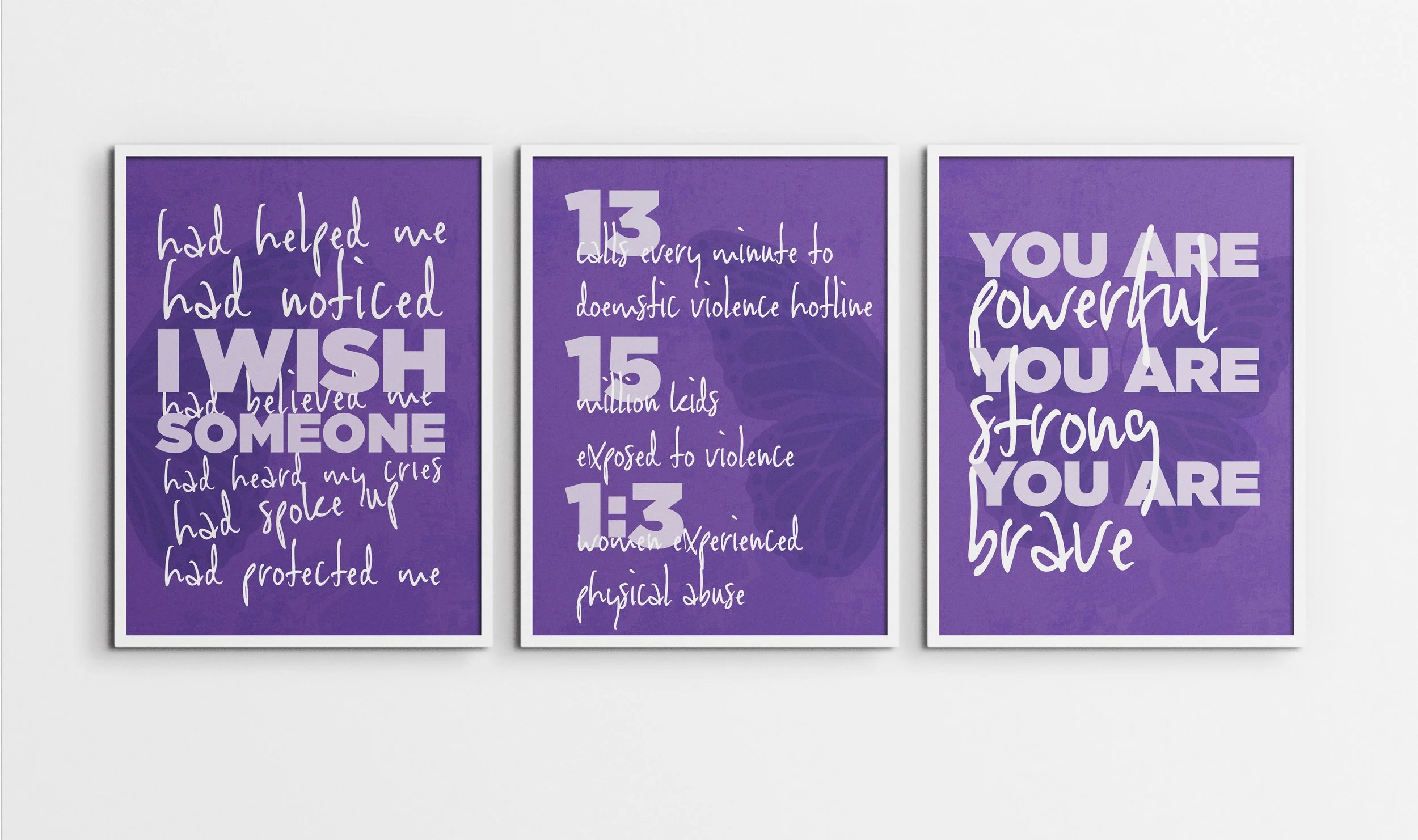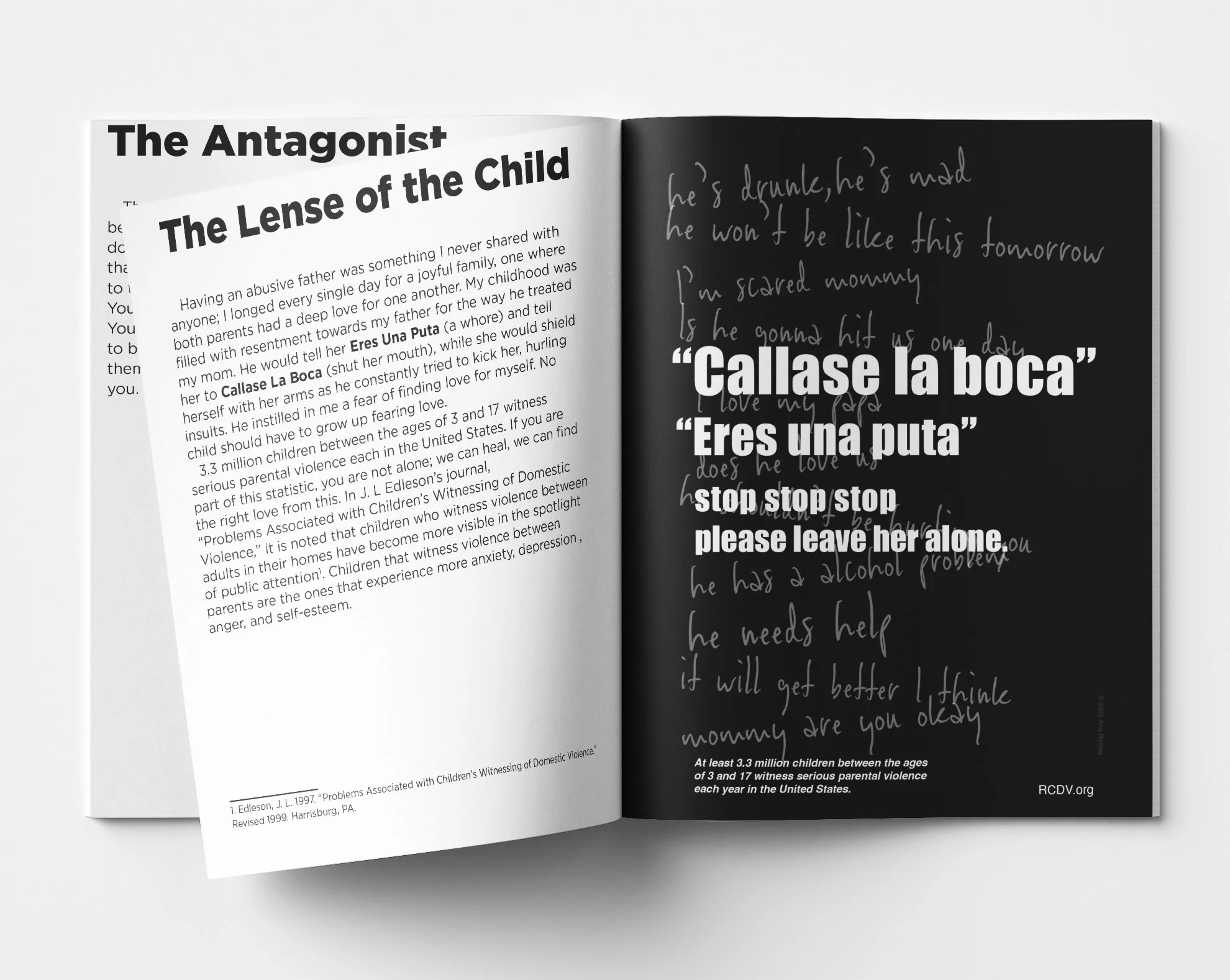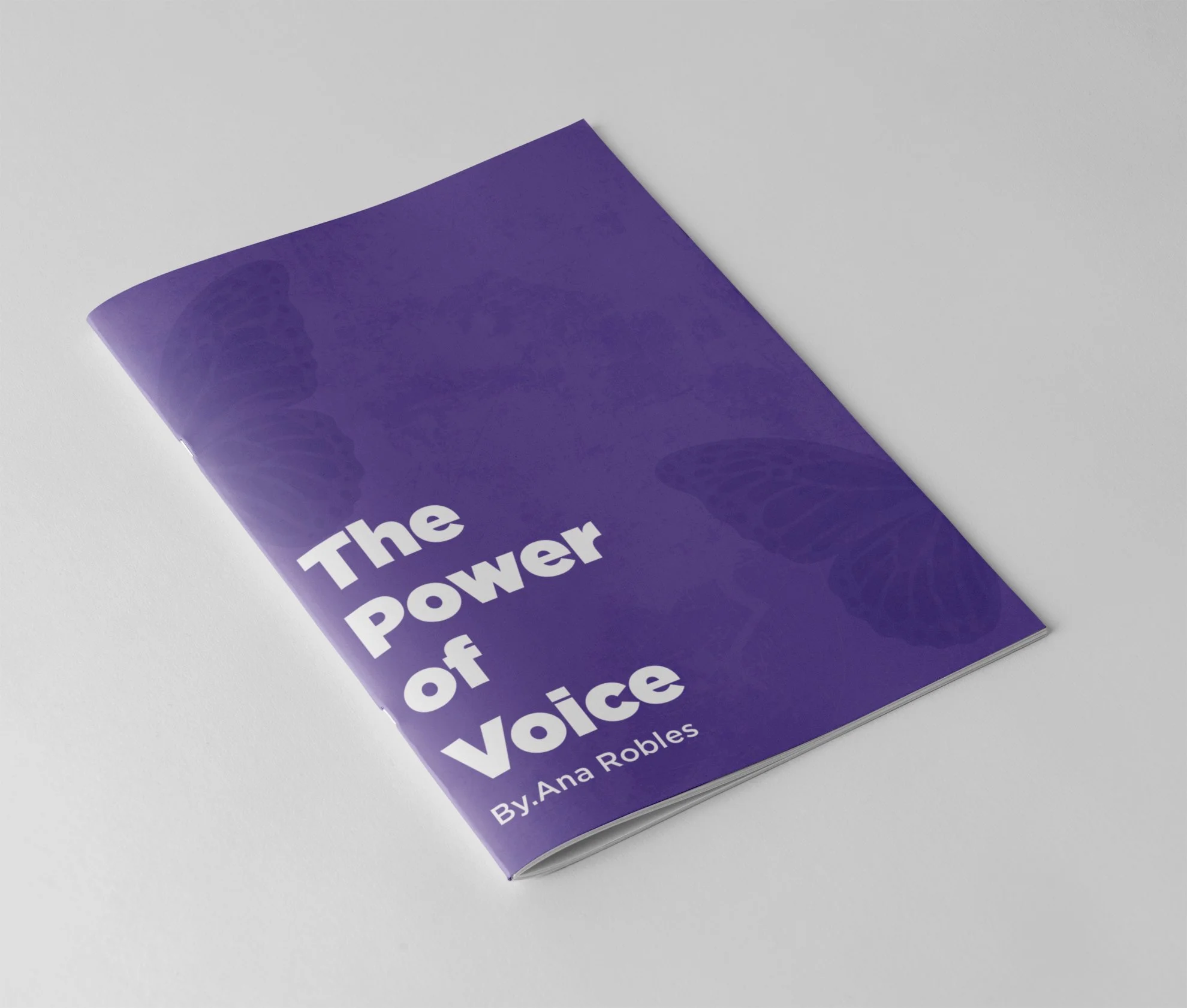The Power of Voice
Ana Robles
How can feminist theory guide the design of survivor-centered solutions that promote long-term empowerment, autonomy, and healing for survivors of domestic violence? This question lies at the heart of my work, rooted in the belief that design can amplify voices, challenge systems of oppression, and create spaces for transformation. The fight against domestic violence has always been inseparable from feminist thought. Emerging from the Women’s Liberation Movement, feminist theory exposed domestic violence not as a private matter but as a systemic issue born from patriarchy and unequal power. The Violence Against Women Act (VAWA) represented the first comprehensive federal legislation that addressed violence towards women, offering funding for services, training, advocacy, and prevention efforts aimed at eliminating domestic violence, sexual assault, and stalking.1 Domestic violence is a persistent issue that ties back to feminist theory and the patriarchal violence that men exert when abusing women. Theorist bell hooks extensively discusses these concepts in her works. To truly eliminate domestic violence, we would need to envision a world without men, an entirely impractical idea. Diane Zosky explores the intersection of feminist theory with object relations theory, suggesting that incorporating object relations theory into the prevailing frameworks of feminist and family systems theories can enhance our understanding of domestic violence.2 The Power of Voice stands against domestic violence and fights for prevention while lifting survivors and those still enduring its impact. We will raise their voices, knowing that every word has the power to heal, to strengthen, and to ignite change. Words can cut through silence and connect in ways nothing else can. I design a space for empathy, realization, and healing. To remind survivors that they are never alone and demand that others step forward in solidarity. We will remind those not directly affected that domestic violence is a very real and urgent issue by presenting statistics that reveal the depth of the problem. This is more than design—it is a survivor-centered call to empower, to restore autonomy, and to spark lasting healing.
1 Gilarde, Paula. “August 2023: The Long History of Domestic Violence and the Development of DVSN - Domestic Violence Services Network, Inc. (DVSN).” Domestic Violence Services Network, Inc. (DVSN) - A Coordinated Community Response to Domestic Violence, August 23, 2023. https://www.dvsn.org/august-2023- thelonghistory-of-domestic-violence-and-the-development-of-dvsn/.
2 Zosky, D. L. 1999. "The Application of Object Relations Theory to Domestic Violence." *Clinical Social Work Journal* 27: 55-69. https://doi.org/10.1023/A:1022861331105
Contact me
anarobles2000@outlook.com
Instagram: @ardesigns09




